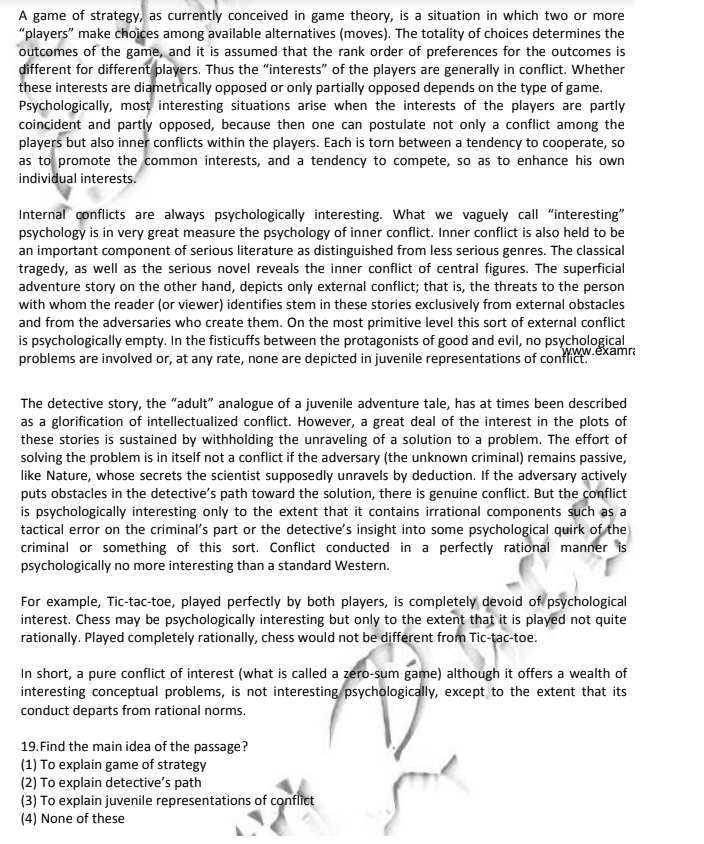
A game of strategy, as currently conceived in game theory, is a situation in which two or more “players “ make choices among available alternatives (moves). The totally of choices determines the outcomes of the game, and it is assumed that the rank order of preferences for the outcomes is different for different players. Thus the “interests” of the players are generally in conflict. Whether these interests are diametrically opposed or only partially opposed depends on the type of game. Psychologically, most interesting situations arise when the interests of the players are partly coincident and partly opposed, because then one can postulate not only a conflict among the players but also inner conflicts within the players. Each is torn between a tendency to cooperate, so as to promote the common interests, and a tendency to compete, so as to enhance his own individual interests.
Internal conflicts are always psychologically interesting. What we vaguely call “interesting” psychology is in very great measure the psychology of inner conflict. Inner conflict is also held to be an important component of serious literature as distinguished from less serious genres. The classical tragedy, as well as the serious novel reveals the inner conflict of central figures. The superficial adventure story on the other hand, depicts only external conflict; that is, the threats to the person with whom the reader (or viewer) identifies stem in these stories exclusively from external obstacles and from the adversaries who create them. On the most primitive level this sort of external conflict is psychologically empty. In the fisticuffs between the protagonists of good and evil, no psychological problems are involved or, at any rate, none are depicted in juvenile representations of conflict.
The detective story, the “ adult” analogue of a juvenile adventure tale, has at times been described as a glorification of intellectualized conflict. However, a great deal of the interest in the plots of these stories is sustained by withholding the unraveling of a solution to a problem. The effort of solving the problem is in itself not a conflict if the adversary (the unknown criminal) remains passive, like Nature, whose secrets the scientist supposedly unravels by deduction. If the adversary actively puts obstacles in the detective’s path toward the solution, there is genuine conflict. But the conflict is psychologically interesting only to the extent that it contains irrational components such as a tactical error on the criminal’s part or the detective’s insight into some psychological quirk of the criminal or something of this sort. Conflict conducted in a perfectly rational manner is psychologically no more interesting than a standard Western.
For example, Tic-tac-toe, played perfectly by both players, is completely devoid of psychological interest. Chess may be psychologically interesting but only to the extent that it is played not quite rationally. Played completely rationally, chess would not be different from Tic-tac-toe.
In short, a pure conflict of interest (what is called a zero-sum game) although it offers a wealth of interesting conceptual problems, is not interesting psychologically, except to the extent that its conduct departs from rational norms.
Find the main idea of the passage?
- To explain game of strategy
- To explain detective’s path
- To explain juvenile representations of conflict
- None of these